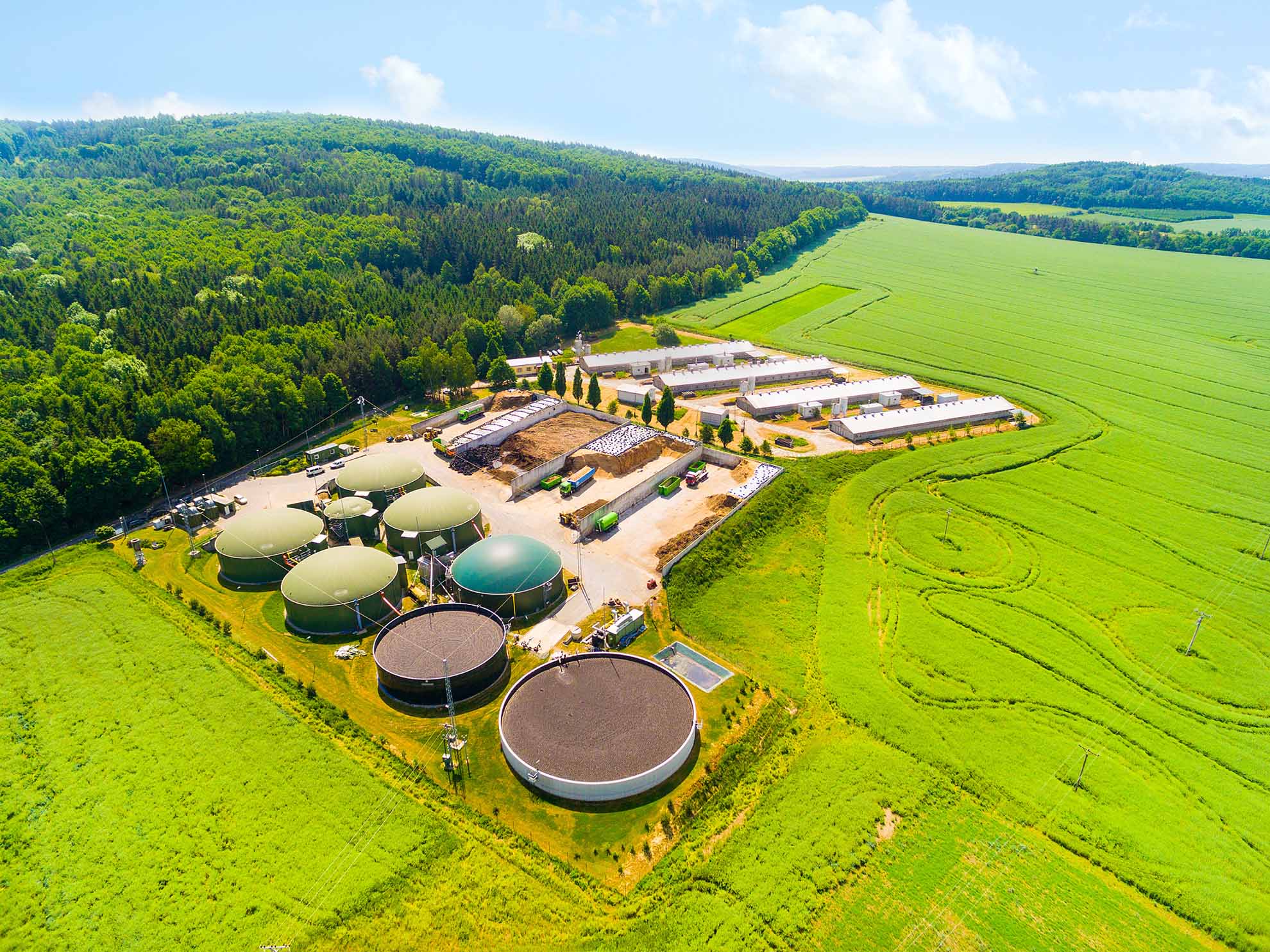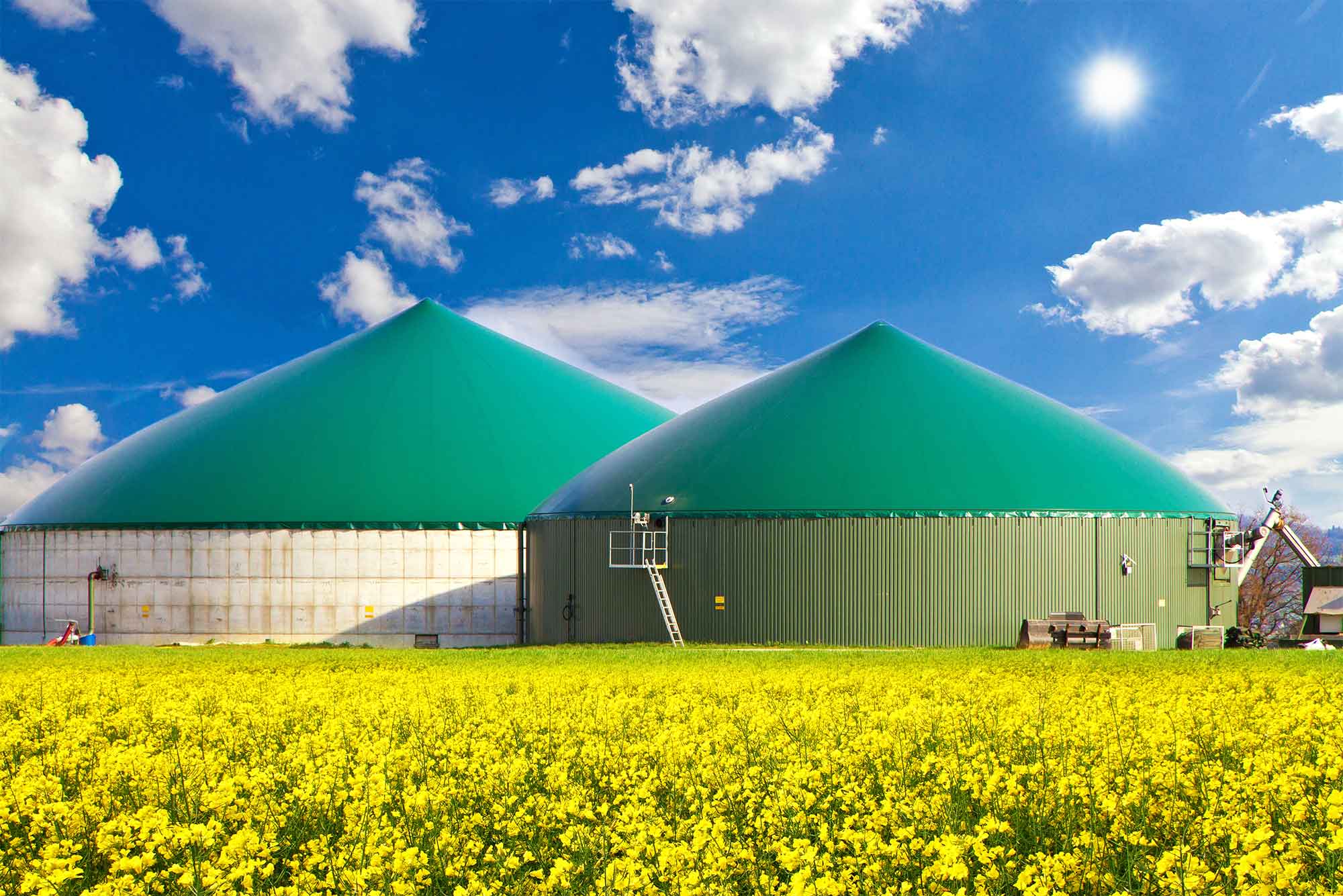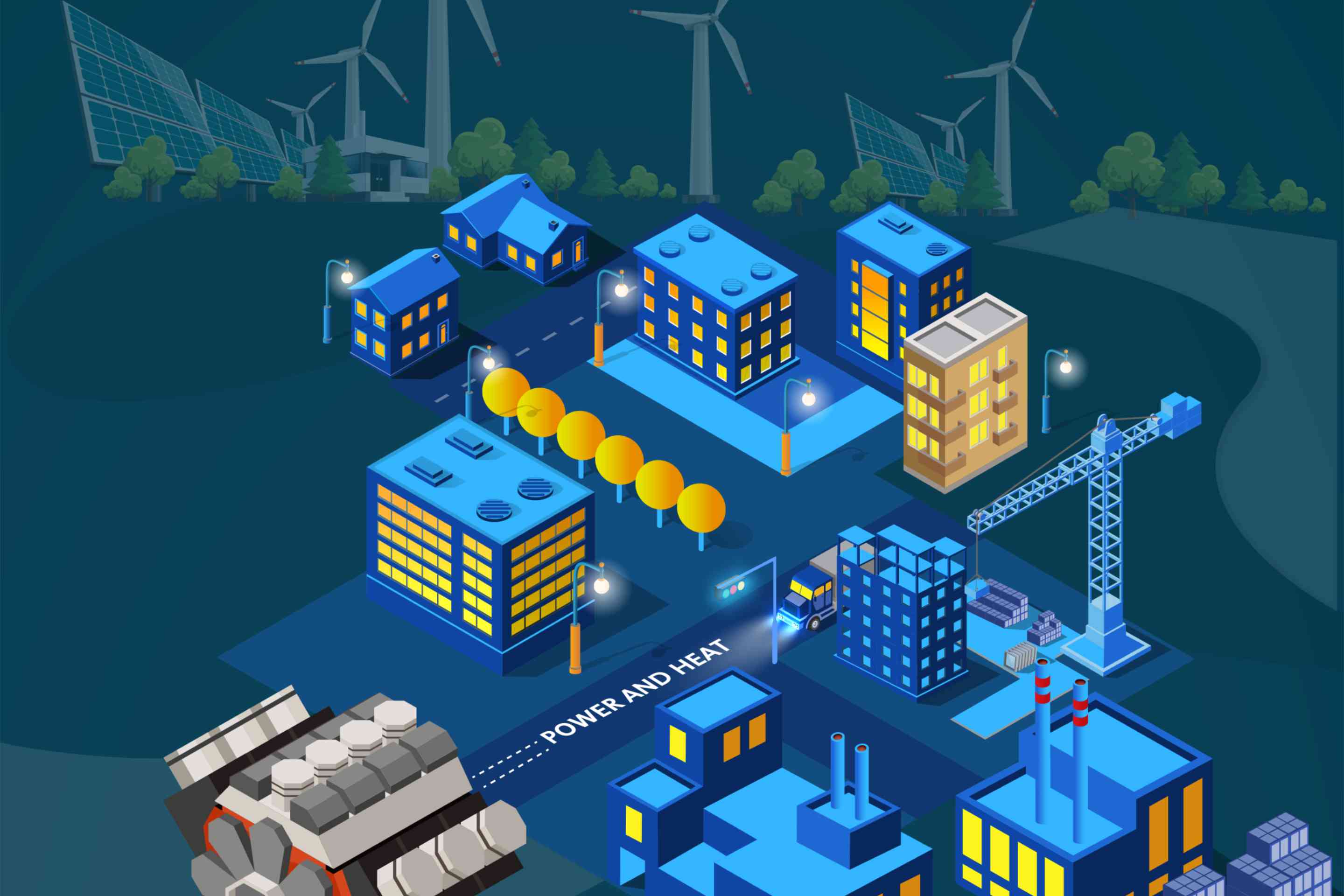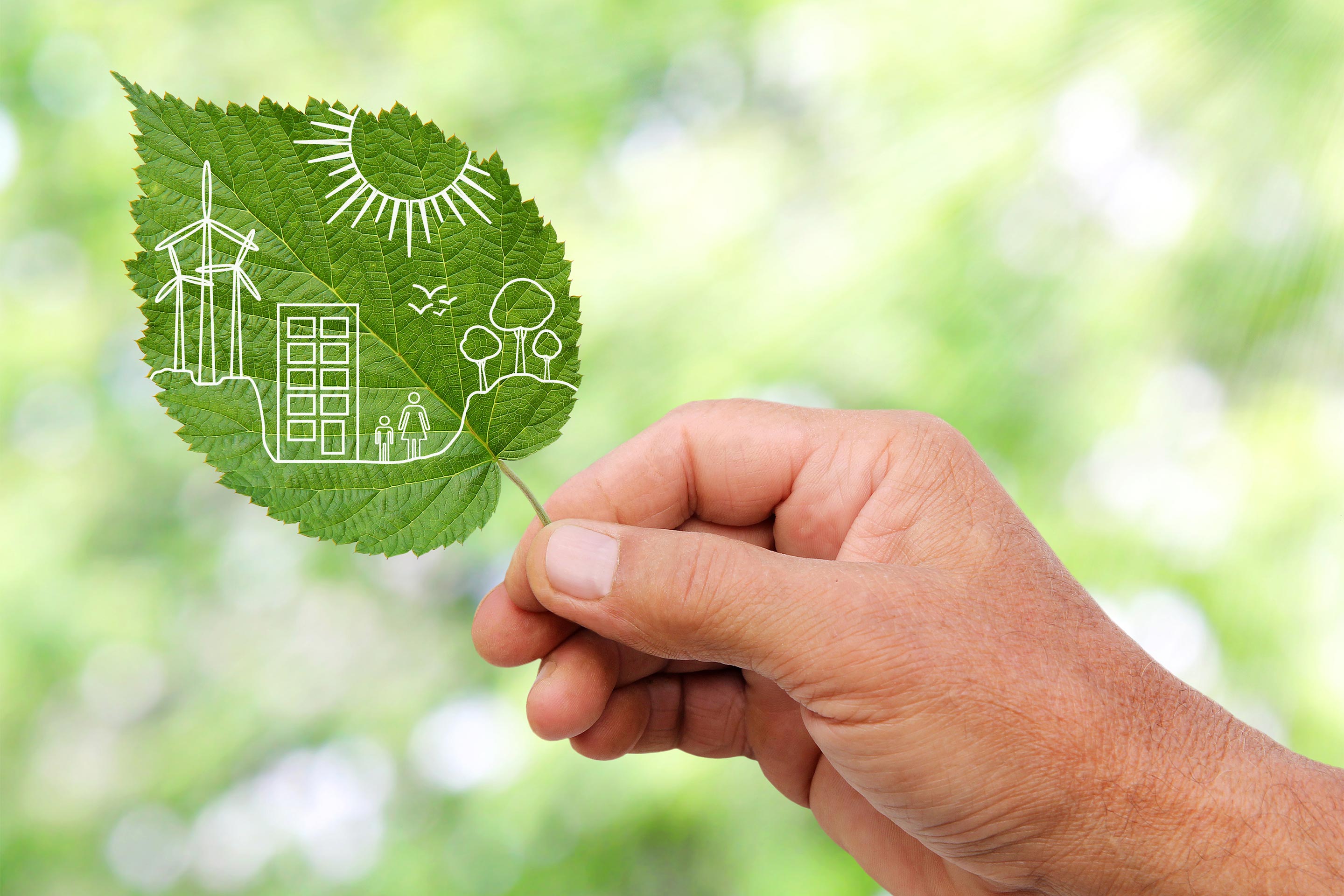Tapping the Potential of Waste and Leftovers for the Production of Energy

Biomass is one of the world’s most important renewable energy sources for sustainable energy and power production. Biomass is solar energy stored in the form of residues, energy crops, or wood. In view of the variety of raw material from which bioenergy can be gained, bioenergy can be used in numerous energy-relevant avenues, e.g. as process heat in the industry, as transportation fuel, and for heating homes. However, to ensure a positive contribution to climate protection through this way of energy generation, the cultivation of biomass must also take place in a sustainable manner.
The great advantage of biomass is that this energy source can be stored easily. In this way, renewable energies such as wind or solar energy, which are not always available, can be supplemented in a flexible way in order to balance potential energy supply fluctuations. By 2050, Germany’s federal government intends to increase the share of renewable energies in the power market to at least 80 percent. The use of waste and leftovers and of the gases produced from these (e.g. biogas or biomethane) thus plays a crucial role in attaining this goal.
Effective Use of Biogas with CHP and Gas Engines
The generation of power from biogas is a viable approach in various production sectors and application areas, e.g. in agriculture, food processing, or the industry. Among the renewable energy sources, bioenergy is considered a multi-talent, as the energy can be gained from solid, liquid, or gaseous biomass. In conventional condensing power plants, the biomass is burnt like fossil fuels. However, this procedure only results in the conversion of about 35 percent of the primary heat contained in the fuel into electrical energy. On the other hand, combined heat and power generation from biomass also makes effective use of the exhaust gas, thereby greatly increasing the CHP plant’s efficiency. In relation to the primary energy used, efficiency levels of more than 80 percent are thus possible. Apart from solar energy, wind energy, and hydroelectric energy, biogas is a regenerative energy source that helps save the limited fossil fuels.
Biogas is produced by means of the anaerobic digestion of organic material in the digester of a biogas plant. The carbon emitted during the combustion merely corresponds to the amount previously absorbed by the substrates. The production of power from biogas thus prevents emissions that would otherwise be released by fossil energy sources. Gas engines are suitable for the efficient production of power from gaseous biomass by way of cogeneration. In cogeneration power plants, solid organic fuels are thermally split by means of the thermal gasification of biomass and converted into a product gas. This product gas is scrubbed and used by the gas engines to generate power and heat from biomass. Due to their efficiency, such biogas plants are often used to generate energy especially in the agricultural sector. The advantages of producing bioenergy with cogeneration and gas engines include the high electrical efficiency that can be reached when generating power with gas engines as well as the possibility of processing the generated product gas for use in other processes and application areas, e.g. for feed-in to the natural gas grid or for use as fuel.
Need for Responsible Cultivation and Use of Biomass
The use of bioenergy in Germany must always be considered in connection with the global use of land. The cultivation of energy crops must not involve the destruction of ecosystems or biodiversity. The available biomass must be employed in an ecologically responsible and meaningful way. Moreover, using land for the cultivation of biomass for energy production purposes is problematic, as due to the growing world population, the demand for land for the production of food and feed is high and will most likely continue to increase. Most of the land not used so far consists of deserts and rainforests. The use and processing of waste and leftovers to biogas thus offers many options and opportunities for responsible bioenergy production, as no land needs to be cultivated for these substances.
Study: Use Available Potential for Biogas and Biomethane from Leftovers
An IEA (International Energy Agency) study conducted in 2020 reveals that the global potential for biomethane from waste and leftovers amounts to approximately 730 Mtoe (megatons of oil equivalent) a year, and the potential for biogas to 570 Mtoe. The fact that Germany alone accounts for two thirds of the European biogas plant capacity demonstrates the great potential that still exists for the utilization of waste and leftovers for the production of biogas and biomethane throughout Europe. Developing countries also have a lot of potential, but unfortunately lack the political incentive to make use of it.
According to the study, the range of unused feedstocks includes crop residues, municipal solid waste, animal manure, wastewater, and forestry residues. The assessment considers only those feedstocks that do not compete with food for agricultural land. Biogas and biomethane production in 2018 was around 35 Mtoe, only a fraction of the estimated overall potential. Full utilization of the sustainable potential could cover some 20 percent of today’s worldwide gas demand.
Low-carbon gases are essential to the energy reform. The development of the biogas and biomethane industry depends on the structure of the respective countries. Supportive policies in the fields of energy, transportation, agriculture, environment, and waste management are required to unlock the potential for biogas and biomethane with regard to clean energy generation.
IEA study: IEA (2020), Outlook for biogas and biomethane: Prospects for organic growth, IEA, Paris https://www.iea.org/reports/outlook-for-biogas-and-biomethane-prospects-for-organic-growth
https://www.iea.org/reports/outlook-for-biogas-and-biomethane-prospects-for-organic-growth
Photo: © Kletr, Adobe Stock
Related articles
Using Biogas Resources for Sustainable, Affordable Heat Supply
To ensure reliable, affordable, and climate-friendly supply of heat and power for businesses and consumers in Germany in the future, the established, proven potential of renewable energies such as biogas needs to be expanded significantly and be utilized even more effectively.
How the Combustion Engine Contributes to Sustainable Heat and Power Supply in the Energy Industry
To draw attention to the sustainability and potential of the combustion engine with a view to a green energy transition, VDMA has initiated a campaign entitled “EMISSION0 – ON THE WAY TO 2050”. In the field of energy generation, the combustion engine will continue to play a key role in reducing emissions.
Europe’s Road to the Energy Reform: Harmonization of Economic Factors and Climate Protection
The energy reform is associated with a number of challenges for politics and the economy alike. The goal is to develop solution concepts that are not only profitable, but also sustainable and eco-friendly.




Latest Comments